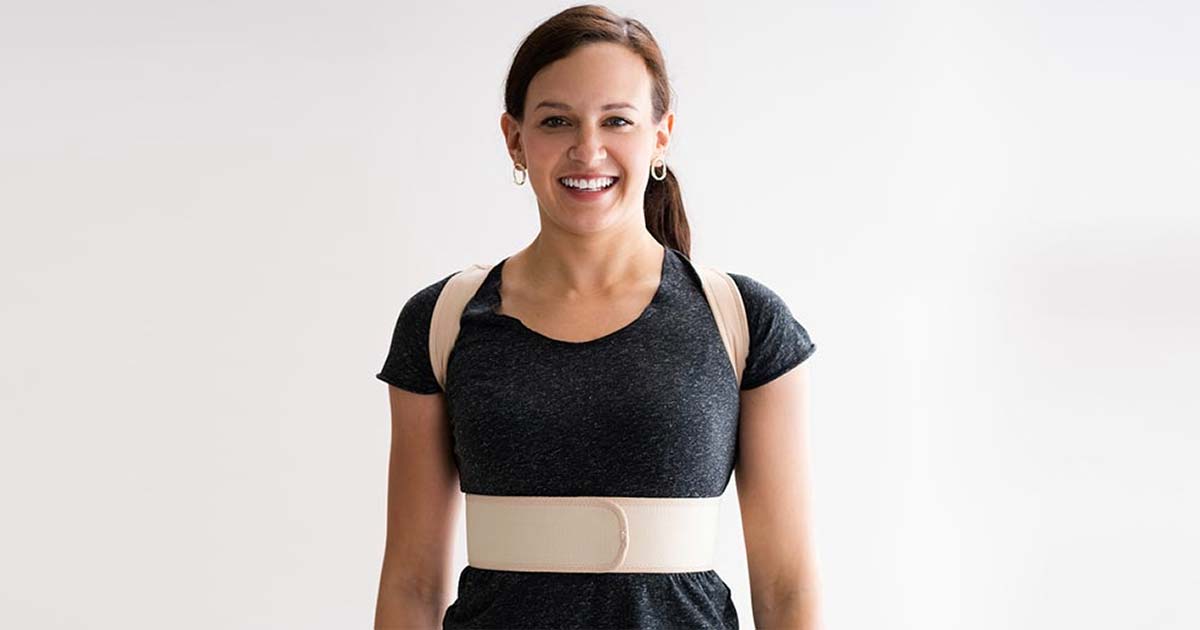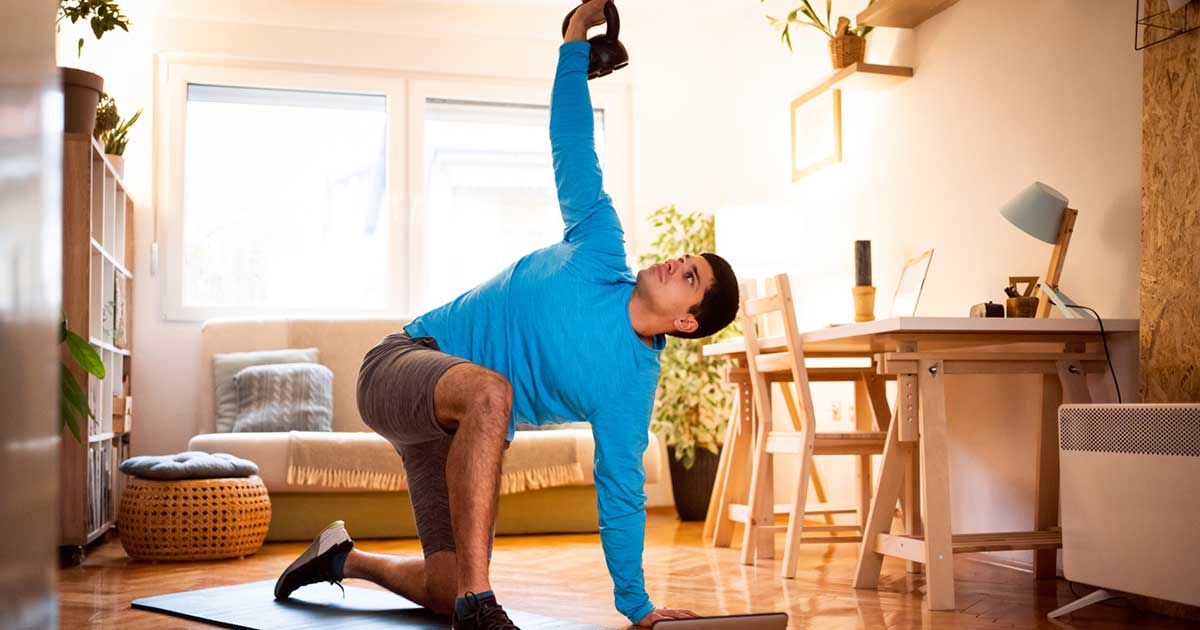
Advice to improve your movement, fitness, and overall health from the #1 in orthopedics in the U.S.
Do Posture Correctors Work? Plus Expert Tips on How to Use Them
Christina Rodriguez, PT, DPT, OCS, breaks down what you need to know about posture correctors.
Advice to improve your movement, fitness, and overall health from the #1 in orthopedics in the U.S.

A year into the pandemic, our collective posture is at its worst. “The constraints of our world now are practically set up for slouching,” says orthopedic specialist Christina Rodriguez, PT, DPT, OCS, cert. MDT. “We’re stuck at home, everything’s done on the computer, and things like the gym, or even a walk to the water cooler, are no longer available to us.”
Add to that: Our bodies are inherently lazy. “Your body will find the path of least resistance, which ends up being that rounded shoulder, hunched back, head drifted forward look,” Rodriguez says. On top of that, bad posture can also hurt. It can cause pain in the neck, upper back, shoulders, and lower back, and, because your body is out of alignment, it can even lead to injury.
If this sounds familiar, you may want to consider a posture corrector. These devices come in a variety of different forms. Some look like a harness, fitting over your shoulders or across your lower back. Others are shirts with special panels designed to help you to remember to activate certain muscle groups. Still others come with pads that stick on your back and use vibrations or other cues (like a phone alarm) to remind you to sit up straight. Some even combine these methods.
How Posture Correctors Work
What all posture correctors have in common is that they are designed to address muscle imbalances that arise when we spend long periods of time in unhealthy, fixed positions. While the muscles in the front of the chest (pectorals) have a tendency to become tight, the muscles in the upper back, including the middle trap and rhomboids, are likely to become overstretched. Correctors can help activate the muscles that haven’t been worked enough and give them a guide for where they need to be.
“This is called proprioception, where the body gets sensory feedback in order to feel where it’s supposed to be in space,” says Rodriguez. Proprioception is what helps you to maneuver freely without having to stop to think about every move. It enables you to touch your finger to your nose with your eyes closed, to walk down a flight of stairs without looking at every step, or sit in a chair without looking under your rear end.
Correctors allow us to build on our proprioceptive senses, providing us with a keener awareness of what good posture feels like and what we need to do to achieve it. “If I start to slouch, the posture corrector will let me know I’m in the wrong position so I can pull my shoulders back or tuck my lower back in,” Rodriguez says. Ideally, eventually this correction will become second nature.
How to Choose a Posture Corrector
There’s no data on which type of corrector works best, and Rodriguez says any corrector can be beneficial if you use it properly while going about your daily routine (no, you shouldn’t wear one to bed). If you’re ready to give one a try, here are some things to look out for:
- Does it target your weak areas? There are different posture correctors for different parts of your body. The most common are for your shoulders, your cervical thoracic junction (where your upper back meets your neck) and your lumbar spine. If you’re not sure where your weak areas lie, take a look at your posture from the waist up to pinpoint the origins of your slouch. Is your back arching too much? Try a corrector with lumbar support. Are your shoulders hunching or is your neck drifting forward? Consider one that helps keep your shoulders down and back. If you’re truly lost, Rodriguez suggests seeing a physical therapist to help you choose one that fits your needs and focuses on the areas that demand the most support.
- Does it fit comfortably? You want breathable material that feels good on your skin and doesn’t cause chafing. It shouldn’t contort your body into unnatural positions or hold you in place too strictly. “If it’s not comfortable, it won’t be effective because you’re not going to use it,” says Rodriguez.
- Can you use it by yourself? You don’t want a contraption that requires a PhD to operate. You want to be able to put it on, adjust it and take it off without relying on anyone else to help you tighten a strap or lift it off of you.
- Does it look okay? Take a peek at how it lays under your clothing. Most likely you want your posture corrector to be hidden from view.
- Is the price right? Posture correctors with a tech component tend to be more expensive than other types.
How to Use a Posture Corrector
Rodriguez suggests limiting use to only a few hours per day. If you keep it on too long, your body may begin to rely on the device so much that you revert back to that rounding. “You don’t want to use it as a crutch and have it ultimately do more harm than good,” she adds.
Most importantly, don’t plan to use a posture corrector permanently. There’s no magic number in terms of how long you’ll have to wear one, but when you get a glimpse in the mirror of yourself with better posture, that’s the time you can say so long to your little helper. “Think of it like training wheels; everyone will be different in terms of how long they want to use it,” says Rodriguez.
These devices are best used in conjunction with a posture-strengthening exercise routine. Your goal is to show your body what it feels like to be in perfect alignment and to strengthen the muscles you need to get it there. “The point is to become more aware of what your body is doing and then nudge yourself into a more optimal position,” says Rodriguez. "You want to engage those postural and stabilizing muscles while wearing the posture corrector so your body can recruit those muscles by itself later on."
Published 3/8/2021


